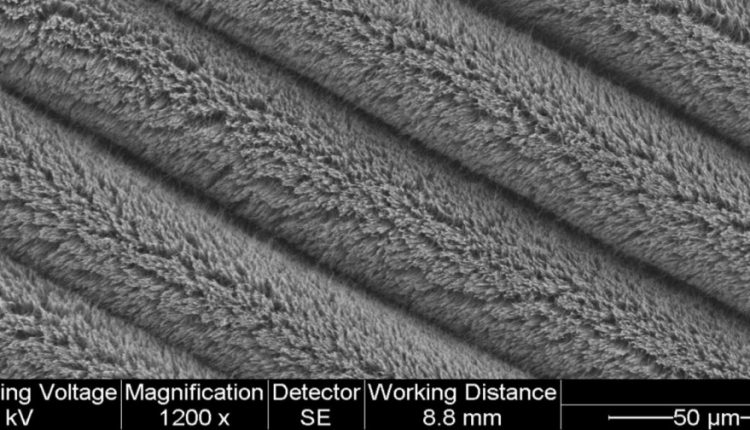Highly stretchable supercapacitors that can power wearable electronics are a step closer to becoming reality with a newly developed supercapacitor made from crumpled nanotube forests that can stretch to 800% of their original size and last through thousands of stretching/relaxing cycles.
Most people know wearable tech in its basic form as iWatches that communicate with smartphones. Those are two pieces of technology that need batteries. But if patches of smart skin for burn victims that can monitor healing while powering themselves could be developed, along with other stretchable/wearable electronics capable of extreme contortions and that conform to complicated, uneven surfaces, wearable tech could be implanted into biological tissues and organs to detect disease, monitor improvement and even communicate with medical practitioners.
Changyong Cao, director of Michigan State University’s Soft Machines and Electronics Laboratory, led a team of scientists in crumpling vertically aligned carbon nano tube (CNT) arrays, or CNT forests. “Instead of having a flat thin film strictly constrained during fabrication, our design enables the three-dimensionally interconnected CNT forest to maintain good electrical conductivity, making it much more efficient, reliable and robust.”
Crumpled standing CNTs grow like trees with their canopies tangled on wafers in forests merely 10-30 micrometers high. After being transferred and crumpled, the CNT forest forms impressive stretchable patterns, like a blanket. The 3D interconnected CNT forest has a larger surface area and can be easily modified with nanoparticles or adapted to other designs.
Metal oxide nanoparticles can be easily impregnated into the crumpled CNTs to improve efficiency. Researchers are hoping their new approach will spark the advancement of self-powered stretchable electronic systems.
Source: Michigan State University

